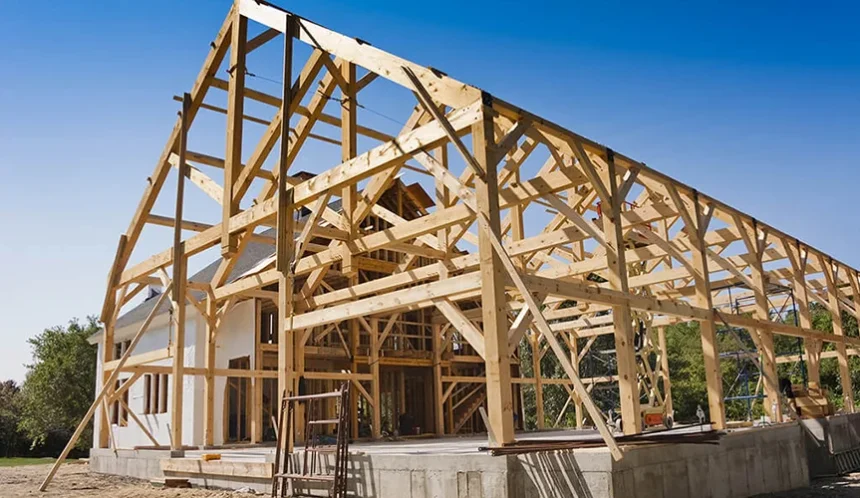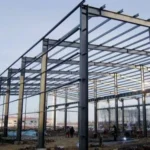Sustainable construction has become a driving force in the modern building industry as businesses, homeowners, and governments seek eco-friendly alternatives to traditional construction methods. Timber frames, in particular, have emerged as a popular option due to their sustainability, versatility, and aesthetic appeal. This blog explores why timber frames are the preferred choice for sustainable construction and how they contribute to a greener future.
1. Renewable and Eco-Friendly Material
One of the primary reasons timber frames are favored in sustainable construction is that wood is a renewable resource. Unlike steel or concrete, which rely on finite natural resources like ore and fossil fuels, timber can be grown, harvested, and replanted. Well-managed forests continuously regenerate, ensuring a sustainable supply of wood without depleting ecosystems.
Many timber suppliers source their wood from certified forests, such as those regulated by the Forest Stewardship Council (FSC). This certification guarantees that the timber is harvested in a way that promotes biodiversity, prevents deforestation, and supports local communities. Choosing timber for construction also reduces the demand for non-renewable materials, lowering the overall carbon footprint of the building process.
2. Low Carbon Footprint
Timber has a significantly lower carbon footprint than other building materials like steel and concrete. The production and processing of steel and cement emit large quantities of carbon dioxide (CO2), contributing to greenhouse gas emissions. Conversely, wood stores carbon throughout its lifespan. Trees absorb CO2 from the atmosphere during their growth, and this carbon remains locked within the timber until it decomposes or is burned.
In fact, studies have shown that timber can store up to one tonne of CO2 per cubic meter, making it an effective way to offset emissions during construction. By using timber frames in buildings, developers can actively contribute to carbon sequestration, reducing the environmental impact of the project.
3. Energy Efficiency
Timber is a natural insulator, which makes it highly energy-efficient for construction purposes. Wood has excellent thermal properties, helping to maintain a stable indoor temperature without excessive energy use for heating or cooling. In contrast, steel and concrete often require additional insulation materials and systems to achieve similar levels of energy efficiency.
Buildings constructed with timber frames tend to have lower heating and cooling costs, reducing energy consumption over time. This efficiency translates into long-term savings for property owners while also contributing to sustainability by lowering the building’s reliance on non-renewable energy sources.
4. Biophilic Design and Aesthetic Appeal
Timber’s natural aesthetic is a key factor in its growing popularity in sustainable construction. The warmth, texture, and color of wood can create a sense of harmony between indoor spaces and the natural environment. This aligns with the principles of biophilic design, which emphasizes the connection between humans and nature to enhance well-being.
Incorporating timber frames into a building’s design adds an organic, calming quality to the space, fostering a healthier and more comfortable environment for occupants. Studies have shown that exposure to natural materials like wood can reduce stress, improve cognitive function, and even enhance productivity. This makes timber an ideal choice for homes, offices, and public buildings seeking to promote occupant well-being alongside sustainability.
5. Durability and Longevity
Despite misconceptions about wood being a fragile or short-lived material, timber frames are highly durable and long-lasting when properly maintained. Modern construction techniques and treatments have enhanced the performance of timber, making it resistant to moisture, pests, and decay. Some types of timber, like hardwoods, naturally possess high durability and are well-suited for various climate conditions.
Timber structures have been known to last centuries, as evidenced by historical wooden buildings that still stand today. In addition to longevity, timber frames offer flexibility in design, allowing for easy repairs, expansions, or modifications. This adaptability further extends the lifespan of timber-framed buildings, minimizing the need for resource-intensive renovations or replacements.
6. Faster and Efficient Construction
Timber frames offer significant advantages in terms of construction speed and efficiency. Pre-fabrication of timber components in controlled factory environments allows for precise manufacturing and minimal waste. Once delivered to the construction site, timber frames can be quickly assembled, reducing build times compared to traditional methods.
This efficiency not only lowers labor costs but also reduces the environmental impact of prolonged construction activities. Less time spent on-site means fewer disruptions to the surrounding environment and community, as well as a decrease in energy use associated with construction equipment and transport.
7. Recyclability and Waste Reduction
At the end of a timber building’s lifecycle, wood components can often be repurposed, recycled, or biodegraded. This stands in stark contrast to materials like concrete, which can create significant amounts of waste that end up in landfills. Timber’s ability to be recycled or reused aligns perfectly with the principles of a circular economy, where resources are used efficiently and waste is minimized.
Moreover, the production of timber components generates less waste during manufacturing compared to other materials. Sawdust, wood chips, and off-cuts can be repurposed for other applications, such as bioenergy, wood-based products, or mulch, further reducing environmental impact.
8. Supporting Local Economies
Timber construction supports local economies, particularly in regions where forestry is a significant industry. By choosing locally sourced timber, builders and developers can reduce transportation emissions and support sustainable land management practices within their communities. This localized approach to sourcing materials aligns with the principles of sustainable development, which aim to balance environmental, social, and economic factors.
Conclusion
Timber frames are the preferred choice for sustainable construction due to their renewable nature, low carbon footprint, energy efficiency, and aesthetic appeal. By choosing timber, builders can not only reduce environmental impact but also create healthier, more energy-efficient, and durable structures. As the demand for sustainable building solutions grows, timber frames stand out as a versatile, eco-friendly option for the future of construction.



